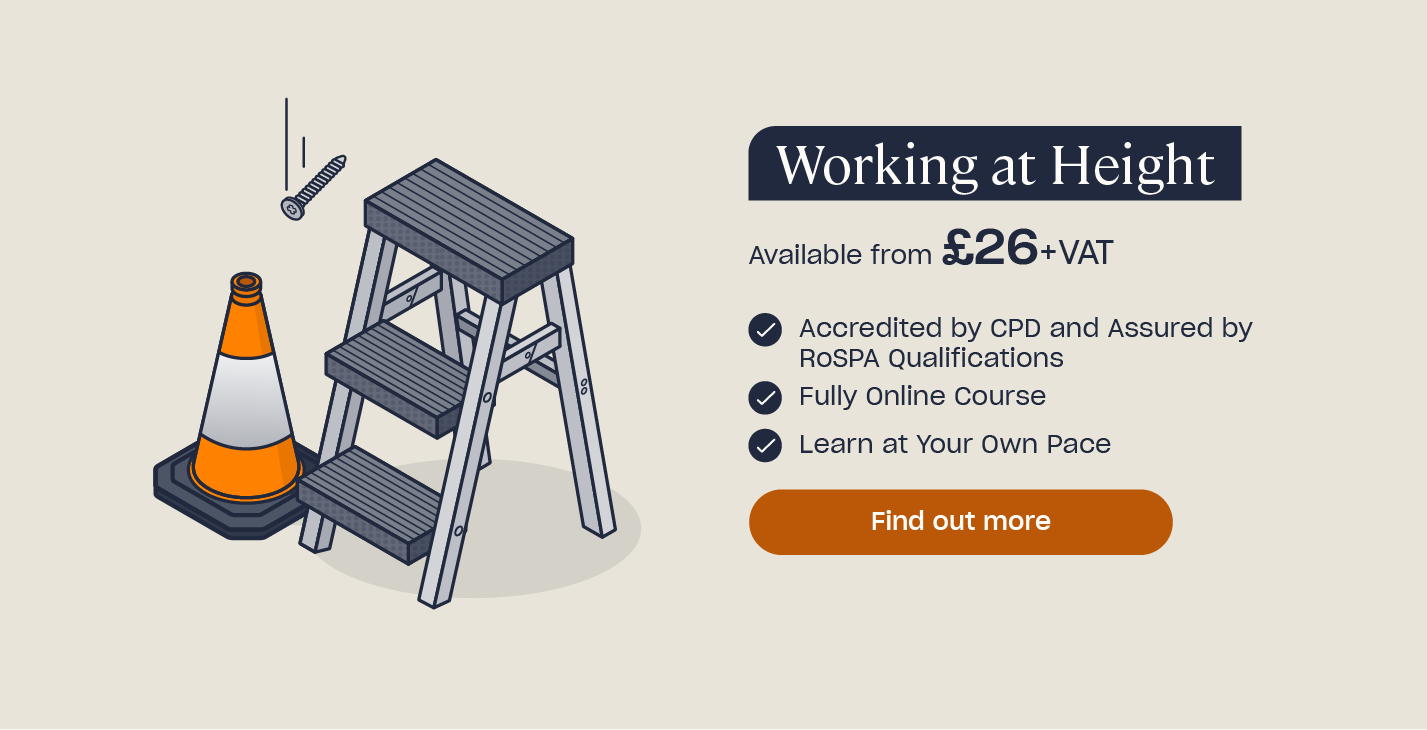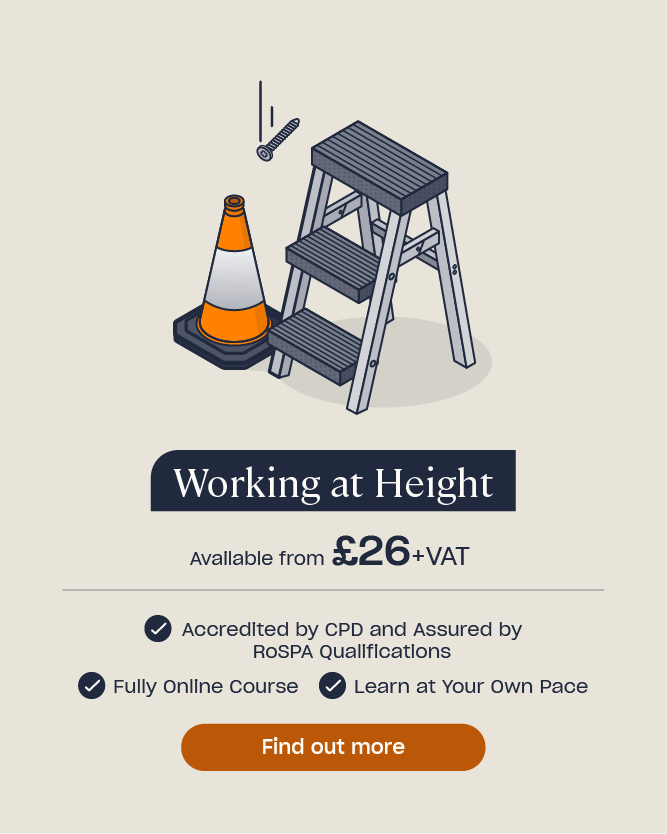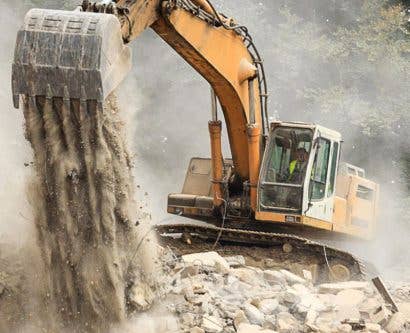Pollution from Construction: What Are the Types & How Can We Prevent It?
Pollution is an issue that the construction industry cannot ignore. The main types of pollution you need to be aware of are air, water and noise. If you don’t put precautionary measures in place to manage harmful waste, it can directly affect site employees and people living nearby. This includes causing irreversible damage to their health, with a concerning link between pollutants and cancer.
Need Asbestos Awareness Training?
Asbestos is one of the most dangerous forms of construction waste. Having an understanding of what asbestos is, the forms it can take, and what to do if you encounter it could be potentially life saving. Take a look at our Asbestos Awareness training to learn more.
Here, we explain the different types of pollution that may be produced as a result of construction activities and suggest ways you can manage and reduce your contribution.
Air Pollution
Air pollution refers to man-made emissions that are released into the atmosphere. Poor air quality is a global health hazard, with the combined effects of ambient air pollution and household air pollution associated with approximately 6.7 million premature deaths annually (World Health Organization). Further, air pollution contributes significantly to the warming of the planet, and therefore to climate change.
As construction activities are a large contributor to air pollution, organisations within the sector have a shared responsibility to limit the amount they produce. Therefore, you’ll need to have an awareness of the emissions your work activities create and take precautions to limit the harmful impact.
Common construction activities that contribute to air pollution include:
- Use of plant and vehicles on site. This depends on the site activities but can include machinery such as breakers, bulldozers, dumpers and excavators. Plant and machinery that is used at construction sites is not regulated by the government to the degree that other vehicles are. Due to the scale of many construction projects, equipment is often running and polluting for a long time. As a lot of this heavy machinery, and other vehicles on site, operate on diesel engines, they release pollutants into the air. This includes the gases carbon monoxide, carbon dioxide, nitrogen oxides and hydrocarbons.
- Land clearing and demolition. As land often has to be cleared and made suitable for construction to take place, this process must be done in a way that ensures the impact on the environment is as minimal as possible. As well as with the construction of buildings, high levels of dust are generated when land is disrupted and existing buildings demolished.
- Chemicals. It is likely that you will use hazardous chemicals on construction sites. This may include paints, glues, oils, thinners and plastics, which all produce noxious vapours.
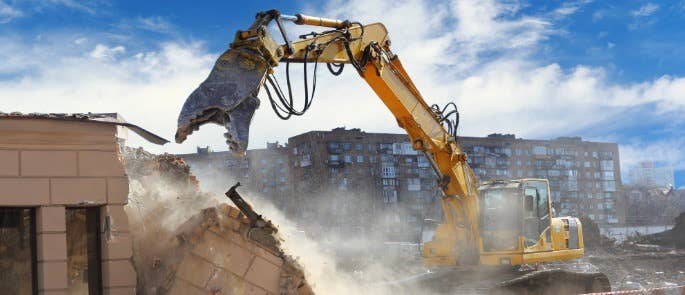
PM10
These large quantities of construction dust from cement, concrete, silica and wood are collectively classified as PM10. PM10 is particle matter less than or equal to 10 micrometres in diameter that is invisible to the naked eye. The diesel engine exhausts of plant and other vehicles is also a large contributor to PM10 emitted at construction sites. Specifically, this is referred to as diesel particle matter (DPM) and contains sulphates and silicates that add to the pollutants in the atmosphere.
Consequences of Air Pollution
Employees
Research into PM10 has shown that it can penetrate deep into the lungs of those who inhale polluted air. For employees working regularly on construction sites, there is an increased risk of them developing health complications as a result. Poor air quality due to pollution can cause the following health problems:
- Coughs, wheezing and shortness of breath.
- Cardiovascular and respiratory diseases.
- Lung cancer.
- Strokes.
- Exacerbation of asthma.
Indeed, 56% of the occupational cancers in men are within the construction industry. This includes mesothelioma, a type of cancer that develops on the lining of the lungs and chest and which the only known cause of is asbestos exposure. Frequent exposure to dusts and fibres, such as silica and asbestos, as well as the fumes and gases emitted by vehicles and machinery explains why lung cancer is particularly common amongst construction workers. Indeed, those working in the construction industry are potentially exposed to between 15 and 20 carcinogens as a result of common work activities.
Local Residents
People living nearby to construction sites may also experience the effects of air pollution. Although local residents will not be in such close proximity to the pollutants as workers, they may experience the effects of poor air quality long after the project has been completed. PM10 and other air pollutants are spread by wind to the surrounding area and can then settle. Here, residents often unknowingly breathe them in and may then develop a cough or shortness of breath as a short-term consequence.
Environmental
As well as the consequences to human health, you need to be aware of the impact air pollution has on the environment. Construction sites are responsible for 14.5% of PM2.5 (particle matter that is 2.5 micrometres in diameter) and 8% of PM10 emissions. The majority of this comes from construction machinery and generators that run on diesel, with 1% representing dust from site activities such as demolition. Both plants and animals struggle to thrive as a result of this contamination, causing a loss of biodiversity and disrupting the food chain. If you want to learn more, why not take a look at our Environmental Awareness Course.
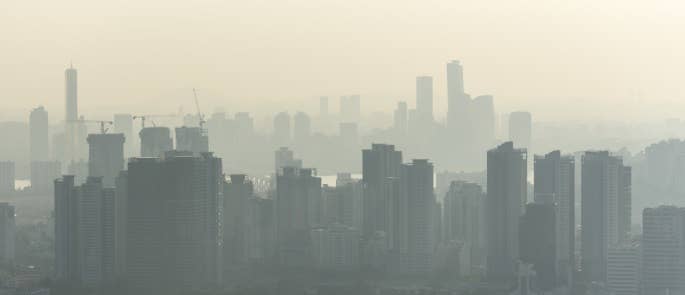
Water Pollution
Water pollution happens when toxic substances end up in water bodies such as rivers, lakes and oceans. This pollution may be visible, either on the surface or deposited on the bed, or invisible to the human eye, such as chemicals that dissolve in water. Construction activities often involve the use of toxic chemicals and pollutants that can end up in the water table if not managed well.
Common construction sources that contribute to air pollution include:
- Diesel and oil.
- Cement.
- Glues.
- Paints.
- Other toxic chemicals.
All of these contaminants have the potential to end up in water as a result of runoff from construction work. Pollutants can enter the water system in a number of ways, such as through drains, seeping into soil, or runoff directly into rivers or lakes.
Consequences of Water Pollution
People
Pollutants from construction sites can soak into the groundwater. It is much harder to treat groundwater than it is surface water and so, as a source of human drinking water, there is a risk that some chemicals may end up being consumed. Chemical pollutants such as arsenic and mercury can cause serious health issues, including cancer, if ingested through contaminated water supplies.
Environmental
Water contaminated by pollutants produced by the construction industry poses a serious danger to the environment. Once pollution has entered the water system, it can harm or kill fish and animals living in it or drinking from it. This can disrupt the entire ecosystem of animals, plants, bacteria and fungi, causing many species to suffer as a result.
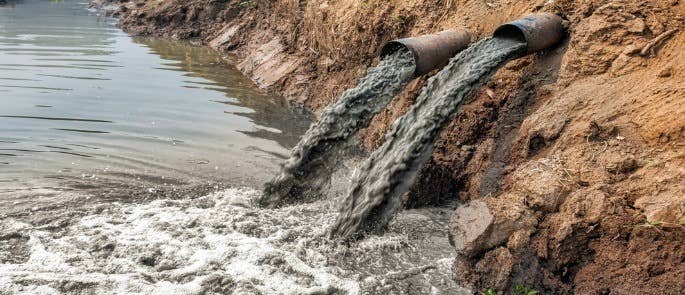
Noise Pollution
Noise pollution is likely to be the type of pollution that’s effects are experienced immediately. The equipment you use may be particularly loud, meaning it is often heard by members of the public who live nearby. As a result, this can cause local residents to experience varying levels of stress, sleep disturbance or high blood pressure.
You must also consider the effects of noise pollution on the construction workers themselves. Additionally, if employees use equipment that is particularly loud, they may even experience hearing loss.
In terms of an environmental impact, noise pollution can disturb the natural cycles of animals as well as reducing the size of the habitat they can use.
Pollution Prevention Strategies
Managing how much pollution you create as a company and as an individual is incredibly important. As well as controlling the negative impacts on site workers, local residents and the environment, enforcing pollution prevention strategies can have a significant positive impact on your business. By working sustainably and considering how you can limit the impact of your construction activities, perception of your company is going to be positive and you can establish yourself as a forerunner in comparison to your competitors.
Under the Environmental Damage (Prevention and Remediation) (England) Regulations 2015, businesses are made financially liable for any damage they cause to land, air, water and biodiversity in England. The regulations reinforce what is known as the ‘polluter pays’ principle. This is in place to hold businesses responsible for the pollution they create by encouraging them to limit their environmental impact with financial incentives. Companies also risk being fined for breaking environmental laws. Some of these so-called ‘enforcement undertakings’ are an alternative to prosecutions, with the money going towards projects helping wildlife. Therefore, if your construction activities do create a lot of pollution, especially when it is avoidable or manageable, you risk being given a significant fine.
To try and reduce your pollution contribution we have created a list of suggestions that you could put in place:
Air Pollution
- Never burn waste materials. Doing so will cause smoke, releasing poisonous gases such as carbon monoxide into the atmosphere. In the UK, you risk being fined for burning materials on site under the Clean Air Act 1993.
- Adopt hybrid technology in place of diggers and excavators with diesel engines. For example, Volvo is currently trialling a prototype hybrid excavator that runs on electric power generated from the down-swing of its boom arm.
- Use low sulphur diesel to power equipment and vehicles.
- Improve your existing equipment by using particulate filters and catalyst converters.
- Use water sprays or sprinklers to control some types of dust and stop it spreading. This will be particularly beneficial during tasks such as the filling of skips or breaking down of concrete.
- Use an on-tool extraction to control some types of dust. This is a type of exhaust that fits onto some tools and removes dust as it is being produced.
- Source local materials to avoid the need for them to be transported hundreds of miles.
- Use renewable or sustainable materials, such as timber from sustainably managed forests.
- Wear appropriate PPE, such as the correct type of respiratory protective equipment (RPE) depending on the task.
Water Pollution
- Monitor and improve your management and disposal of site waste. Make sure all waste is correctly dealt with to stop it from spreading.
- Keep materials such as sand or cement secure. Materials must be located where there isn’t a risk of them being washed into waterways or drains.
- Cover up all drains to prevent waste from ending up in the water.
- Keep the road and footpath to the site clean at all times. This will prevent silt and other pollutants from running off into any bodies of water.
- Properly collect and treat any wastewater that you produce.
Noise Pollution
- Use quiet power tools and equipment to manage noise pollution. Where possible, use modern construction equipment that has been designed specifically to produce less noise.
- Schedule work during sociable hours rather than when residents are likely to be sleeping. For example, between 8 to 6pm on weekdays. You could also notify local residents of the working hours and keep them updated on the project.
- Put acoustic (movable noise) barriers in place to manage the levels of noise pollution.
- Ensure plant and equipment is properly maintained and operated.
- Switch off plant when it’s not in use.
- Ensure employees wear the correct PPE when required to reduce the risk of hearing loss due to excessive noise.
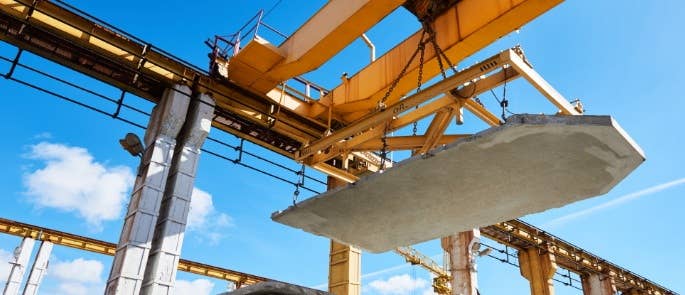
The construction industry must recognise the responsibility it has to monitor and limit the amount of pollution it collectively creates. One of the simplest measures you can take is to be conscious of how much waste and pollutants your work activities create and the consequences they have. Whether you are an employer or employee in the sector, there are strategies that reduce the amount of pollution produced that you can enforce and encourage others to do the same.
What to Read Next:
- Working at Height Training
- How to Dispose of Construction Waste
- Environmental Awareness Course
- Protecting the Public During Construction Projects
- Quality Assurance in Construction


